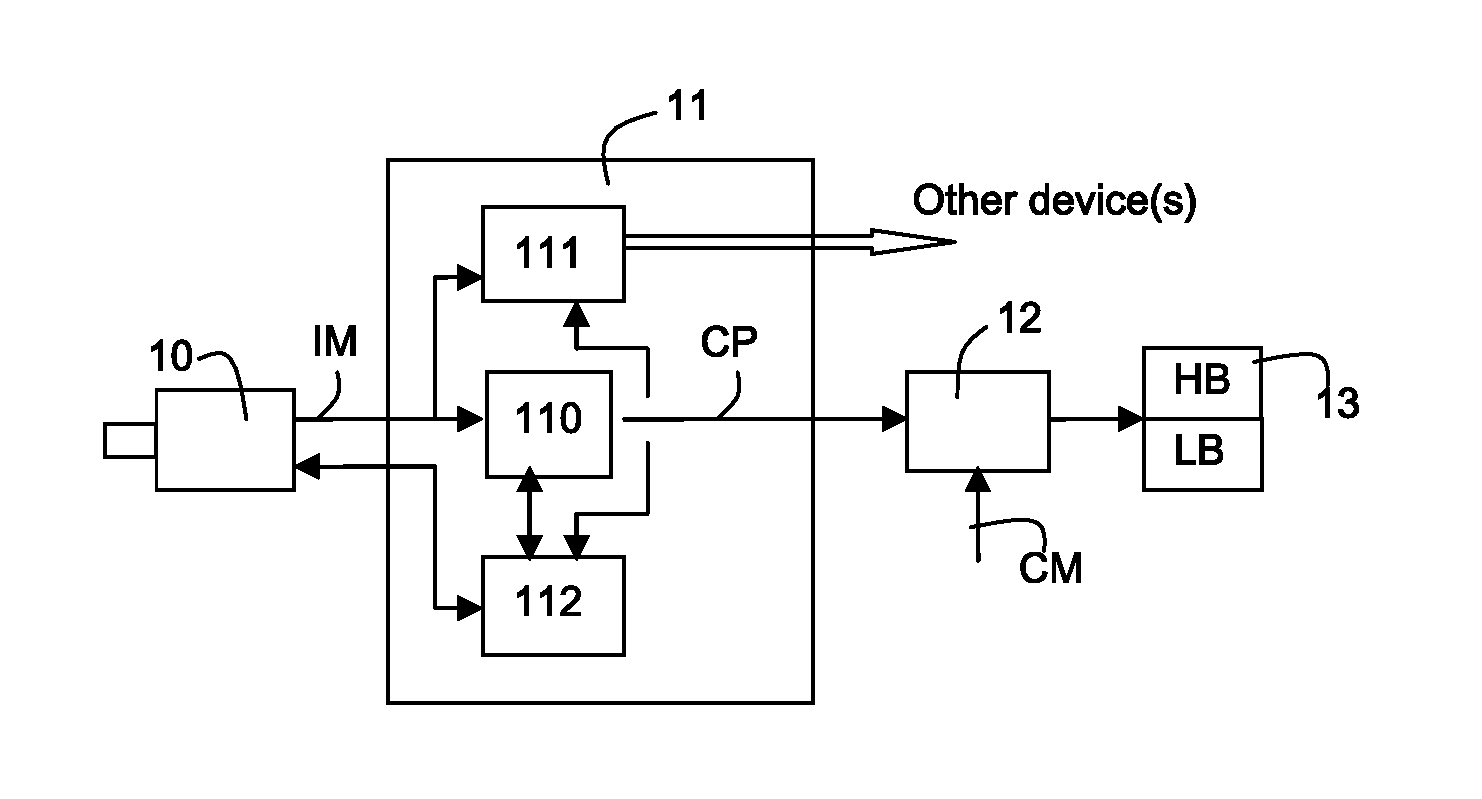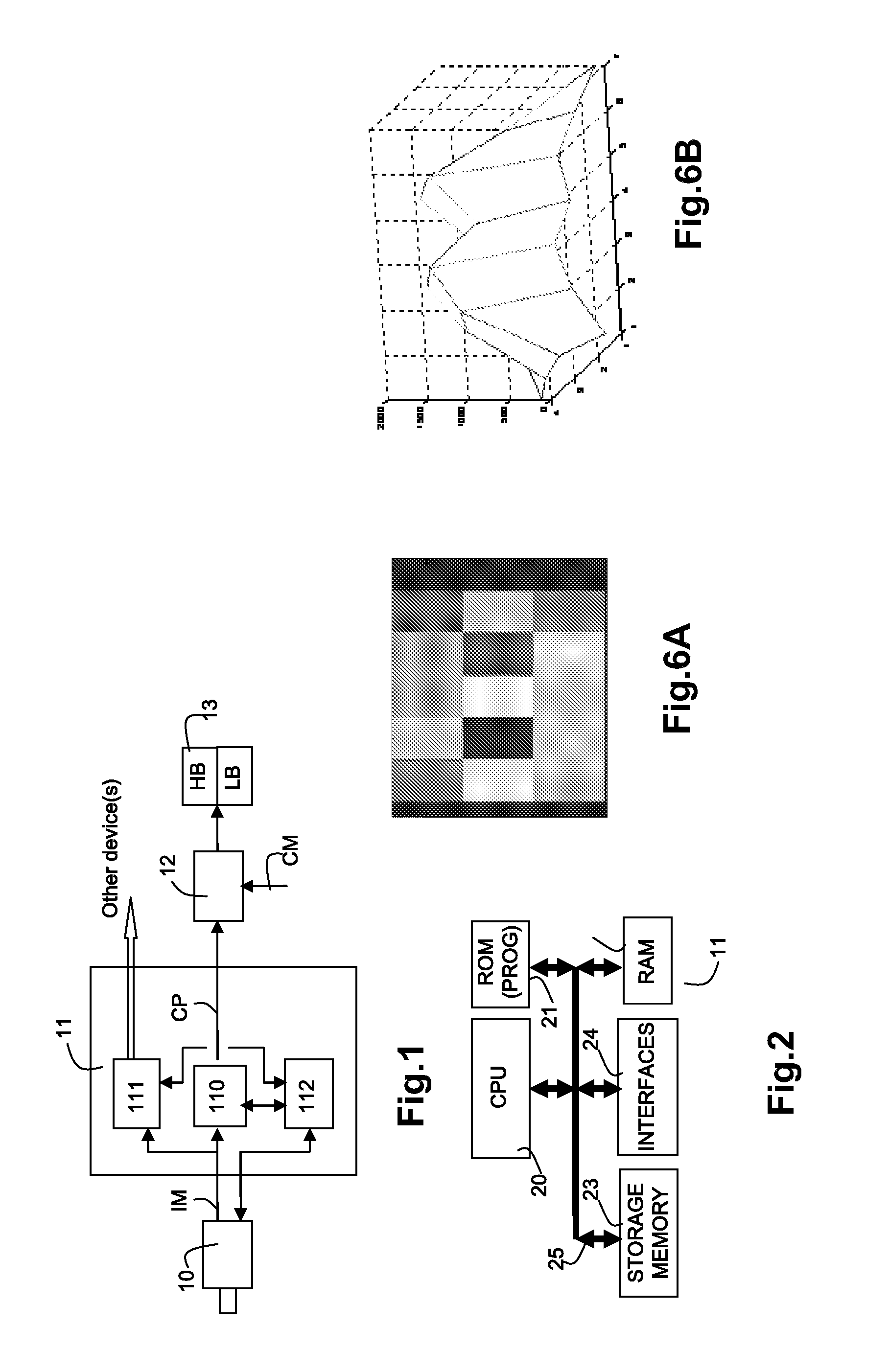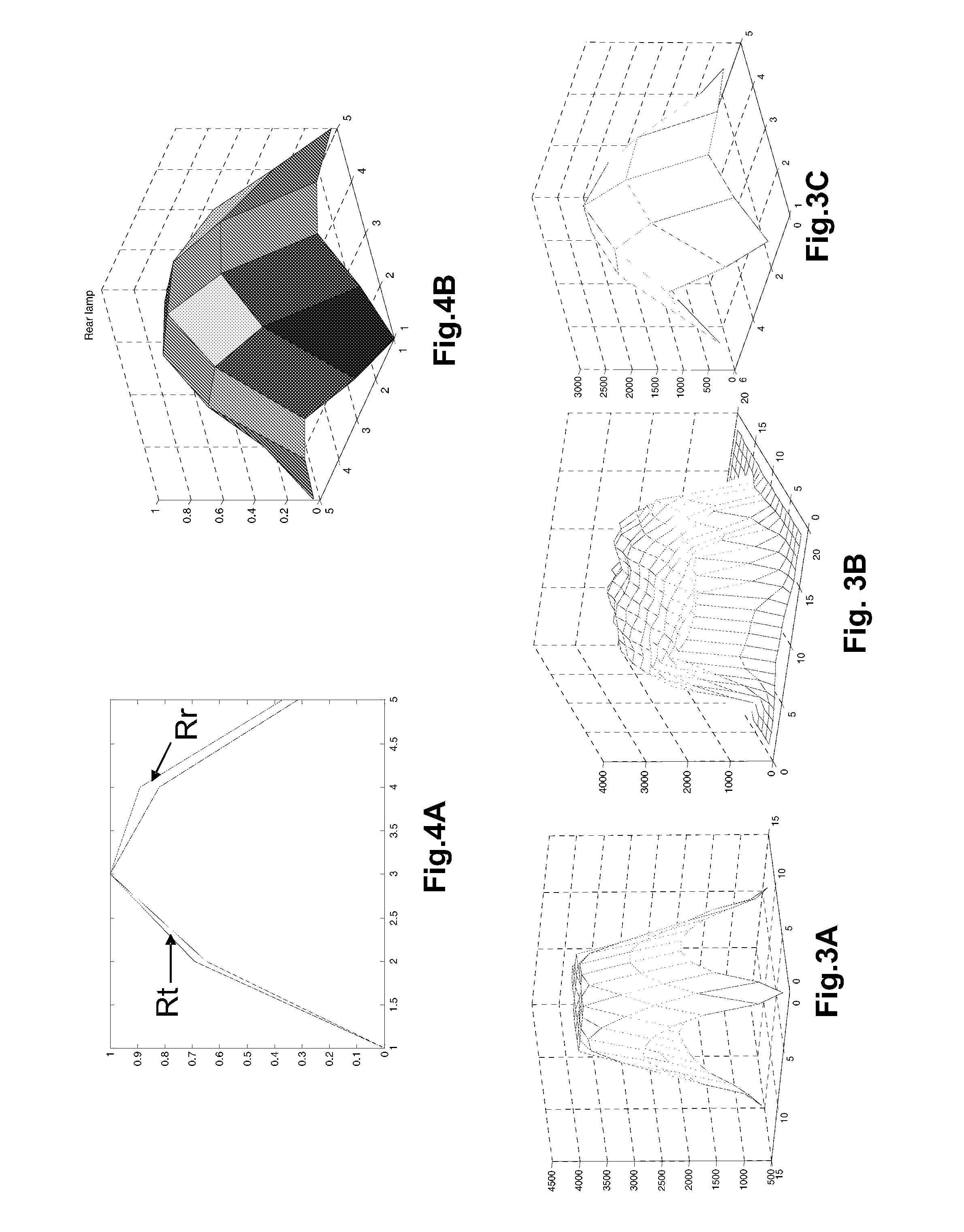Method for controlling the automatic switching of the projector of a vehicle
a technology for projectors and vehicles, applied in the direction of point-like light sources, lighting and heating equipment, transportation and packaging, etc., can solve the problems of difficult to be sure that the light source is present in the landscape, projectors will be switched, and unnecessarily restrict the view of the driver of the vehicle, so as to increase the reliability of discrimination and increase the reliability of differentiation
- Summary
- Abstract
- Description
- Claims
- Application Information
AI Technical Summary
Benefits of technology
Problems solved by technology
Method used
Image
Examples
Embodiment Construction
[0049]FIG. 1 shows the general structure of an automatic switching control device according to the invention,
[0050]FIG. 2 shows a material configuration of a processing unit used by the invention,
[0051]FIGS. 3A, 3B and 3C are three-dimensional representations of the variation in light intensity of three types of light source,
[0052]FIGS. 4A and 4B illustrate the processing for discerning between two types of light source,
[0053]FIG. 5 shows an algorithm for implementation of a method according to the invention, and
[0054]FIGS. 6A and 6B are two and three-dimensional representations of the variation in light intensity of another type of light source.
DESCRIPTION OF THE PREFERRED EMBODIMENTS
[0055] The invention will now be described using a non-limiting example of a device for controlling the automatic switching of the lighting projectors of a motor vehicle from a “high beam” lighting mode to a “dipped / low beam” lighting mode. With reference to FIG. 1, the device for controlling the...
PUM
 Login to View More
Login to View More Abstract
Description
Claims
Application Information
 Login to View More
Login to View More - R&D
- Intellectual Property
- Life Sciences
- Materials
- Tech Scout
- Unparalleled Data Quality
- Higher Quality Content
- 60% Fewer Hallucinations
Browse by: Latest US Patents, China's latest patents, Technical Efficacy Thesaurus, Application Domain, Technology Topic, Popular Technical Reports.
© 2025 PatSnap. All rights reserved.Legal|Privacy policy|Modern Slavery Act Transparency Statement|Sitemap|About US| Contact US: help@patsnap.com



